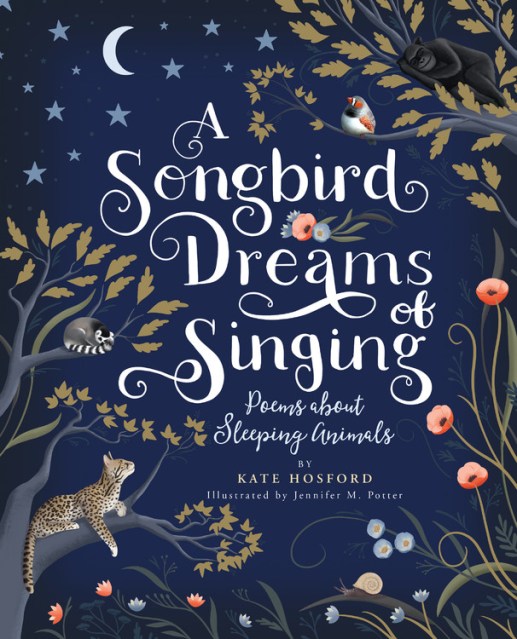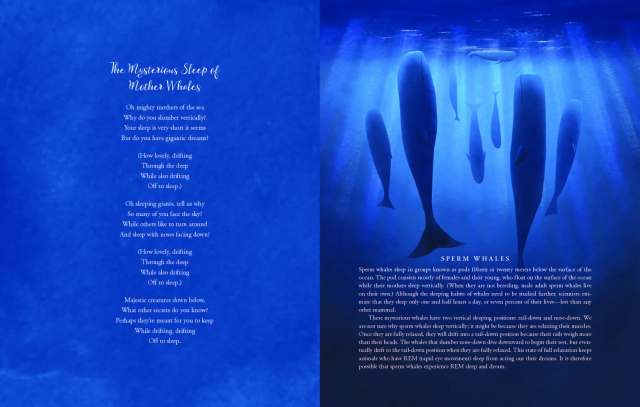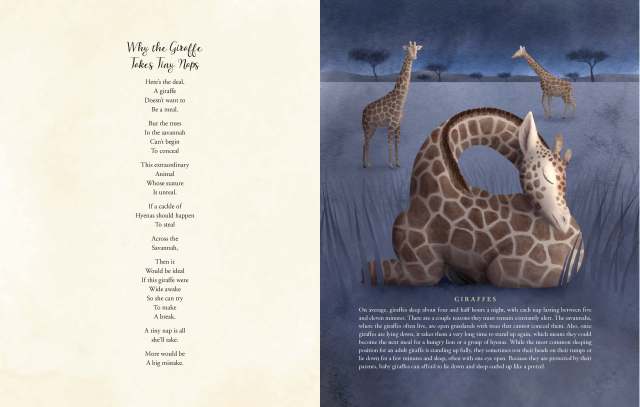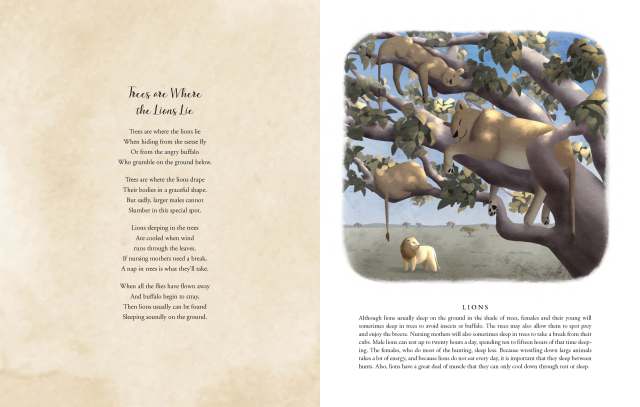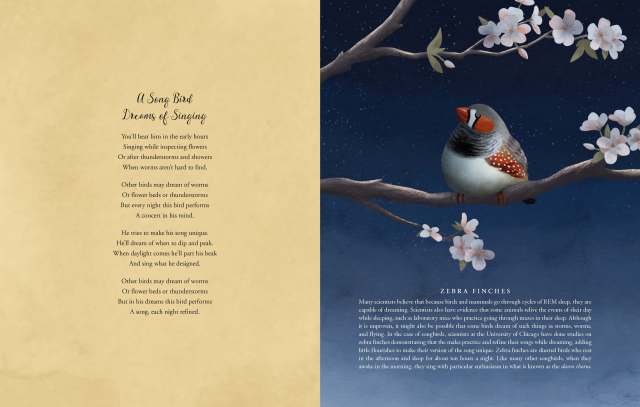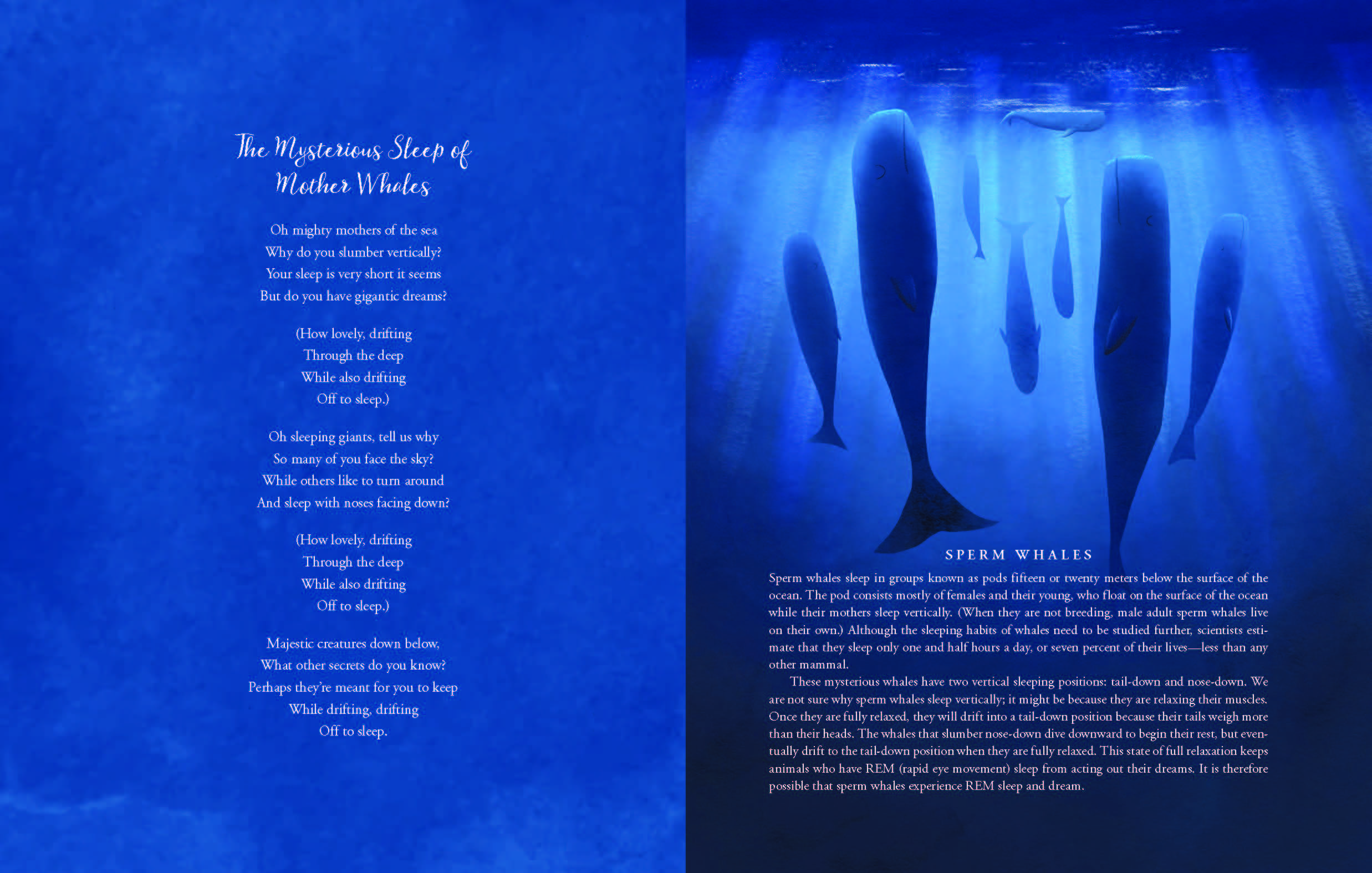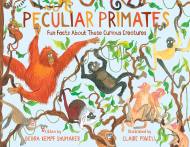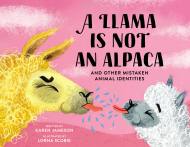Promotion
Use code MOM24 for 20% off site wide + free shipping over $45
A Songbird Dreams of Singing
Poems about Sleeping Animals
Contributors
By Kate Hosford
Illustrated by Jennifer M. Potter
Formats and Prices
Price
$19.99Price
$24.99 CADFormat
Format:
- Hardcover $19.99 $24.99 CAD
- ebook $12.99 $16.99 CAD
This item is a preorder. Your payment method will be charged immediately, and the product is expected to ship on or around November 5, 2019. This date is subject to change due to shipping delays beyond our control.
Also available from:
Did you know otters sleep while holding hands; zebra finches rehearse their songs while dreaming; ducks and dolphins sleep with one half of their brains at a time; and, frigate birds sleep while flying? A Songbird Dreams of Singing: Poems about Sleeping Animals is a book of poetry with a scientific-and child-friendly-underpinning. With a poem for every animal, followed by a paragraph explaining the fascinating science behind how that animal sleeps, this artfully compiled book captures the wonder of our ecosystem. Designed with the look of a classic storybook/collection, with special effects on the cover, the book makes the perfect gift for young children!
Genre:
- On Sale
- Nov 5, 2019
- Page Count
- 40 pages
- Publisher
- Running Press Kids
- ISBN-13
- 9780762467143
Newsletter Signup
By clicking ‘Sign Up,’ I acknowledge that I have read and agree to Hachette Book Group’s Privacy Policy and Terms of Use
